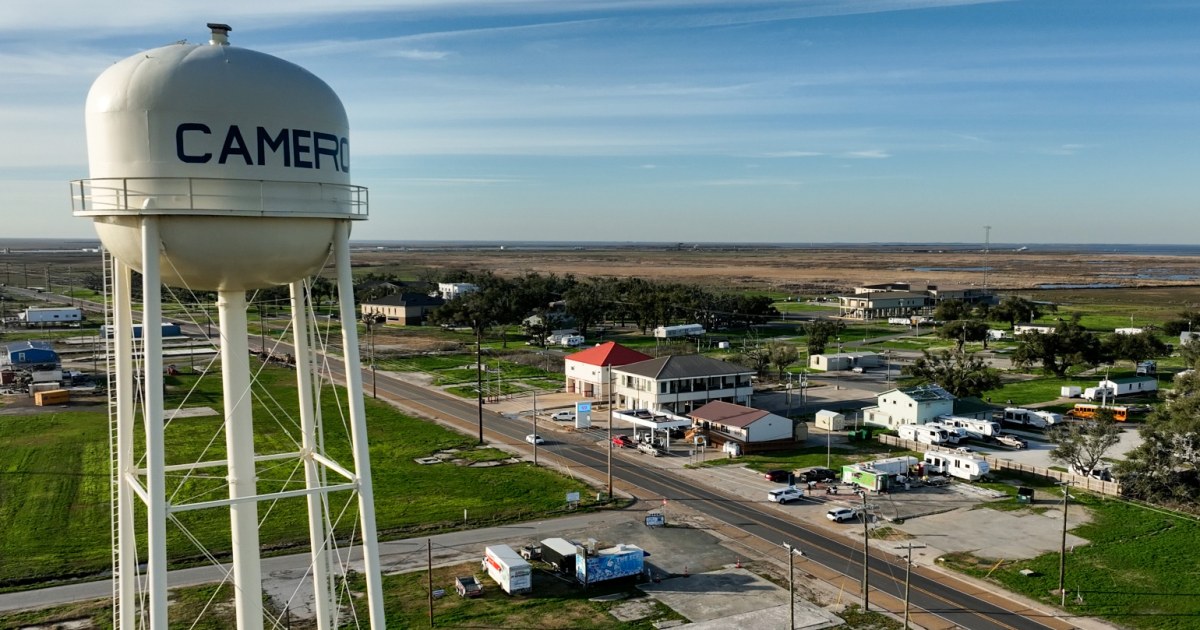World's first year-long breach of key 1.5C warming limit
For the first time, global warming has exceeded 1.5C across an entire year, according to the EU's climate service.
World leaders promised in 2015 to try to limit the long-term temperature rise to 1.5C, which is seen as crucial to help avoid the most damaging impacts.
This first year-long breach doesn't break that landmark 'Paris agreement', but it does bring the world closer to doing so in the long-term.
Urgent action to cut carbon emissions can still slow warming, scientists say.
"To go over [1.5C of warming] on an annual average is significant," says Prof Liz Bentley, chief executive of the Royal Meteorological Society.
"It's another step in the wrong direction. But we know what we've got to do."
Limiting long-term warming to 1.5C above "pre-industrial" levels - before humans started burning large amounts of fossil fuels - has become a key symbol of international efforts to tackle climate change.
A landmark UN report in 2018 said that the risks from climate change - such as intense heatwaves, rising sea-levels and loss of wildlife - were much higher at 2C of warming than at 1.5C.
But temperatures have kept rising at a concerning pace, data from the EU's Copernicus Climate Change Service from the past year shows, illustrated in the graph below. The period from February 2023 to January 2024 reached 1.52C of warming.
This year-long breach is no major surprise. January was the eighth record warm month in a row.
In fact, one science group, Berkeley Earth, says that the calendar year 2023 was more than 1.5C above pre-industrial levels. Other science bodies, such as Nasa, put the past 12 months slightly below 1.5C of warming.
These small differences are mainly due to the way global temperatures are estimated for the late 1800s, when measurements were more sparse.
But all the major datasets agree on the recent warming trajectory and that the world is in by far its warmest period since modern records began - and likely for much longer.
And the world's sea surface is also at its highest ever recorded average temperature - yet another sign of the widespread nature of climate records. As the chart below shows, it's particularly notable given that ocean temperatures don't normally peak for another month or so.
Why has 1.5C been broken over the past year?
The long-term warming trend is
unquestionably being driven by human activities - mainly from burning fossil fuels, which releases planet-warming gases like carbon dioxide. This is also responsible for the vast majority of the warmth over the past year.
In recent months, a natural climate-warming phenomenon known as El Niño has also given air temperatures an extra boost, although it would typically only do so by about 0.2C.
Global average air temperatures began exceeding 1.5C of warming
on an almost daily basis in the second half of 2023, when El Niño began kicking in, and this has continued into 2024. This is shown where the red line is above the dashed line in the graph below.
An end to El Niño conditions is expected in a few months, which could allow global temperatures to temporarily stabilise, and then fall slightly, probably back below the 1.5C threshold.
But human activities mean temperatures will ultimately continue rising in the decades ahead, unless urgent action is taken.
"Rapid reductions in greenhouse gas emissions are the only way to stop global temperatures increasing," concludes Samantha Burgess, Deputy Director of Copernicus.
Can we still limit global warming?
At the current rate of emissions, the Paris goal of limiting warming to 1.5C as a long-term average - rather than a single year - could be crossed
within the next decade.
This would be a hugely symbolic milestone, but researchers say it wouldn't mark a climate cliff edge.
"It's not a threshold beyond which climate change will spin out of control," says Prof Myles Allen of the University of Oxford and Gresham College, and a lead author of the UN's landmark 2018 report.
The impacts of climate change would continue to accelerate, however - something that the
extreme heatwaves, droughts, wildfires and floods over the past 12 months have given us a taste of.
"Every tenth of a degree of warming causes more harm than the last one," Prof Allen adds.
An extra half a degree - the difference between 1.5C and 2C of global warming - also greatly increases the risks of passing "tipping points".
These are thresholds within the climate system which, if crossed, could lead to rapid and potentially irreversible changes.
For example, if the Greenland and West Antarctic Ice Sheets passed a tipping point, their potentially runaway collapse would cause "catastrophic" rises to global sea-levels over the centuries that followed, Prof Bentley says.
But researchers are keen to emphasise that humans can still make a difference to the world's warming trajectory.
The
world has made some progress, with green technologies like renewables and electric vehicles booming in many parts of the world.
This has meant some of the very worst case scenarios of 4C warming or more this century - thought possible a decade ago - are now considered much less likely,
based on current policies and pledges.
And perhaps most encouragingly of all, it's still thought that the world will more or less stop warming once
net zero carbon emissions are reached. Effectively halving emissions this decade is seen as particularly crucial.
"That means we can ultimately control how much warming the world experiences, based on our choices as a society, and as a planet," says Zeke Hausfather, a climate scientist at US group Berkeley Earth.
"Doom is not inevitable."
https://www.bbc.com/news/science-environment-68110310




